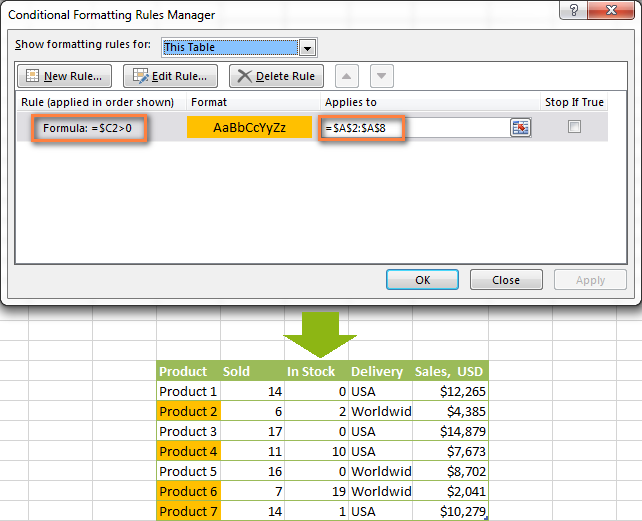

Custom Conditions: For situations where you want to manipulate a preset condition, you can create your own rules.We’ll familiarize you with several of the most popular ones in the next section. Preset Conditions: Excel has a huge library of preset rules encompassing nearly all functions that beginner users will want to apply.Advanced users can also apply the program’s built-in formulas to logic rules. You won’t have to hard-code any logic, though - Excel and other spreadsheet apps have built-in parameters so you can simply select the conditions you want the rules to meet. If-Then Logic: All conditional formatting rules are based on simple if-then logic: if X criteria is true, then Y formatting will be applied (this is often written as p → q, or if p is true, then apply q).The following structural aspects of Excel conditional formatting will guide how you create and apply rules: Keep Your Team in Sync with Real Time Conditional Formatting in Smartsheetīefore we walk you through creating and applying conditional formatting, you should understand the basics of how it works.Frequently Asked Questions About Conditional Formatting.Step 2: Add Multiple Conditions to a Rule.Step 1: Add New Rule and Apply Stop If True Function.Advanced Conditional Formatting in Smartsheet.Step 4: Data Validation and Dropdown Lists.Step 3: Conditional Formatting Based on Another Cell.Step 2: Apply Multiple Conditions to a Rule with AND Formula.Step 1: Create a New Rule and Apply Stop if true Rule.Advanced Conditional Formatting Functions in Excel.Step 5: Edit and Delete Conditional Formatting Rules.Step 3: Apply Progress Bars (Data Bars).Step 1: Open Your Existing Excel Spreadsheet in Smartsheet.

#HOW TO DELETE CONDITIONAL FORMATTING EXCEL 2016 HOW TO#
How to Apply Basic Conditional Formatting in Smartsheet.



 0 kommentar(er)
0 kommentar(er)
